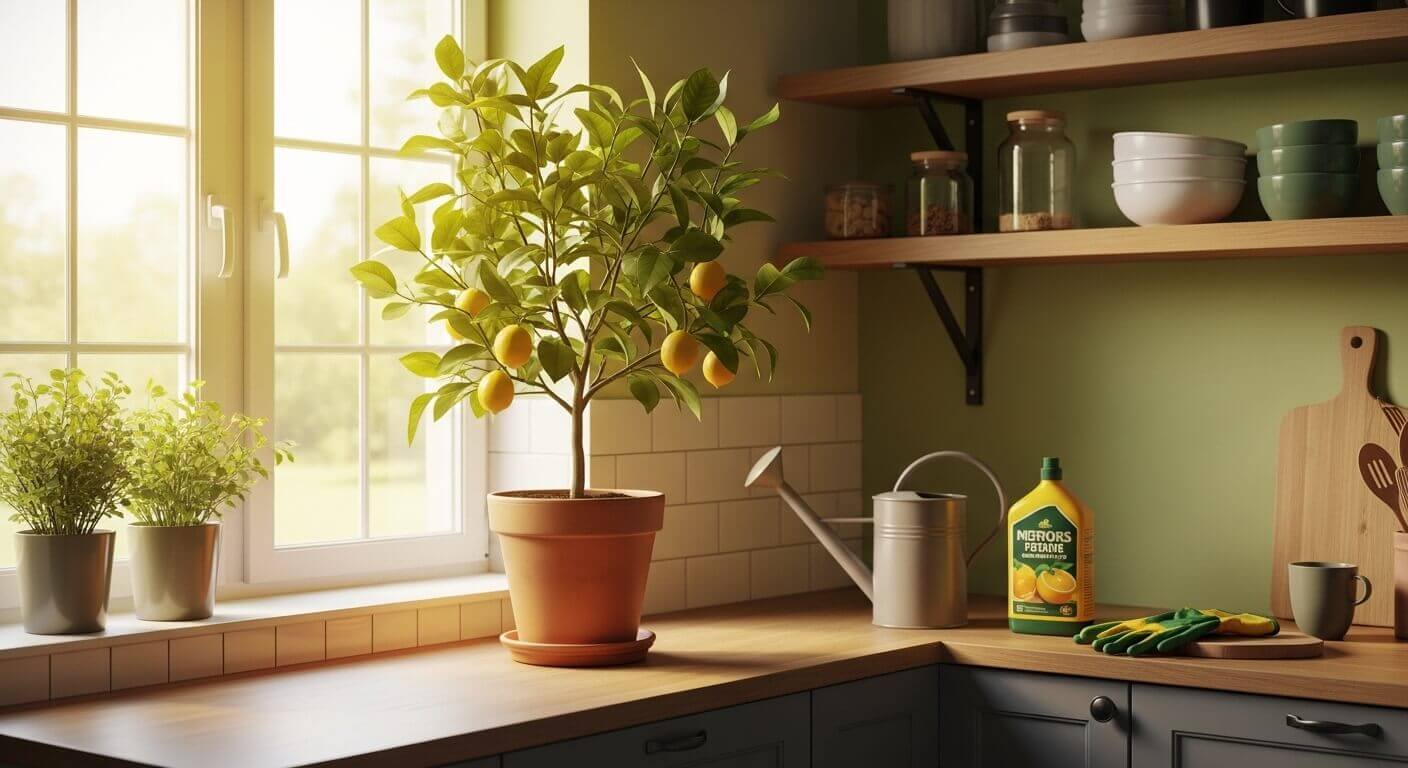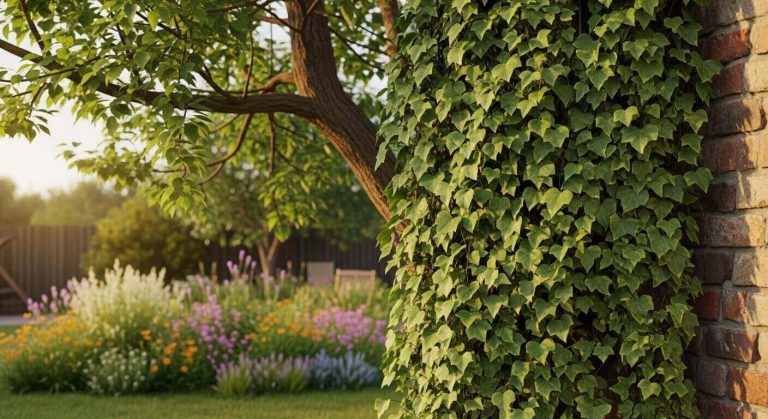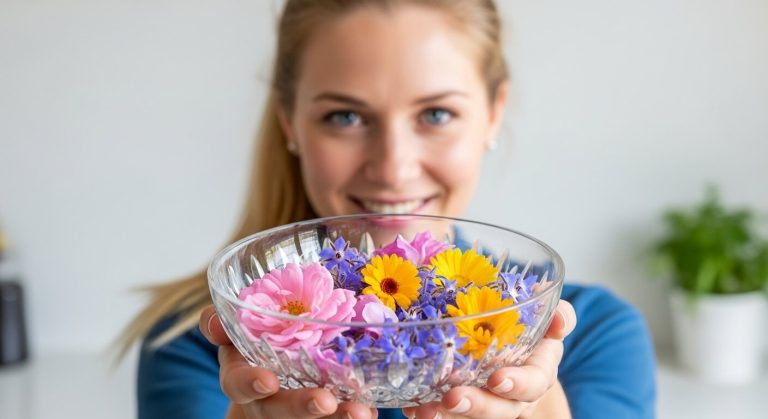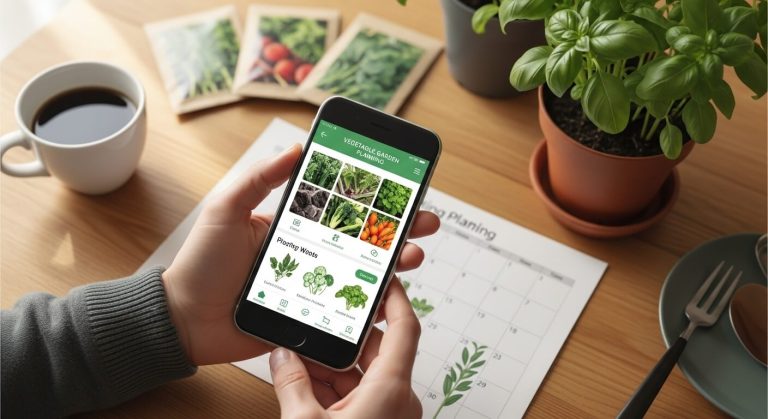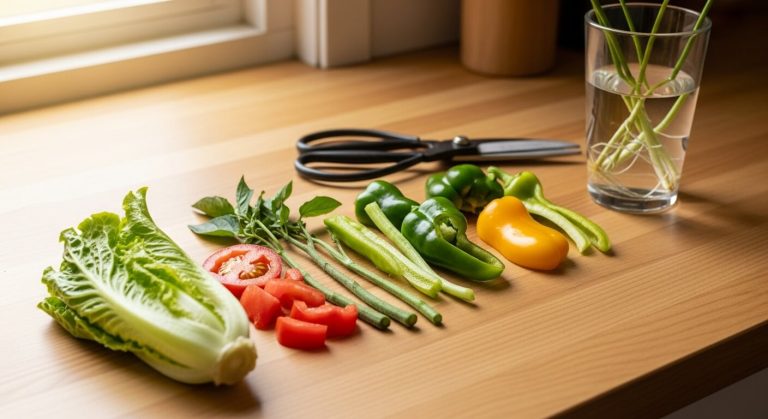How to Grow Citrus Trees Indoors: Beginner’s Guide for a Lush, Fruity Home
Why Settle for a Houseplant When You Can Have an Indoor Orchard?
Ever dreamt of plucking a fresh lemon or juicy orange straight from your living room? Well, you’re not alone. This is How to Grow Citrus Trees Indoors: A Complete Beginner’s Guide, and trust me, it’s easier (and more fun) than you think. Whether you have a tiny apartment or a sunlit kitchen, indoor citrus trees add both beauty and bounty to your home.
In this guide, we’ll walk through everything you need to know to successfully grow citrus trees indoors—from selecting the right varieties to providing proper care and avoiding common pitfalls. Let’s roll up those sleeves and bring the citrus grove indoors!
Choose the Right Citrus Variety for Indoor Success
Not all citrus trees are ready to go condo! The key to success lies in choosing dwarf citrus trees bred specifically for container growing. These compact fruit-bearers are ideal for homes with limited space.
Best Citrus Varieties to Grow Indoors:
- Meyer Lemon — Sweet, fragrant lemons that thrive indoors.
- Calamondin Orange — Small and tart, perfect for decorative and edible purposes.
- Australian Finger Lime — Unusual and trendy, with “caviar-like” pulp.
- Blood Orange — Yes, you can even grow blood orange indoors with proper lighting.
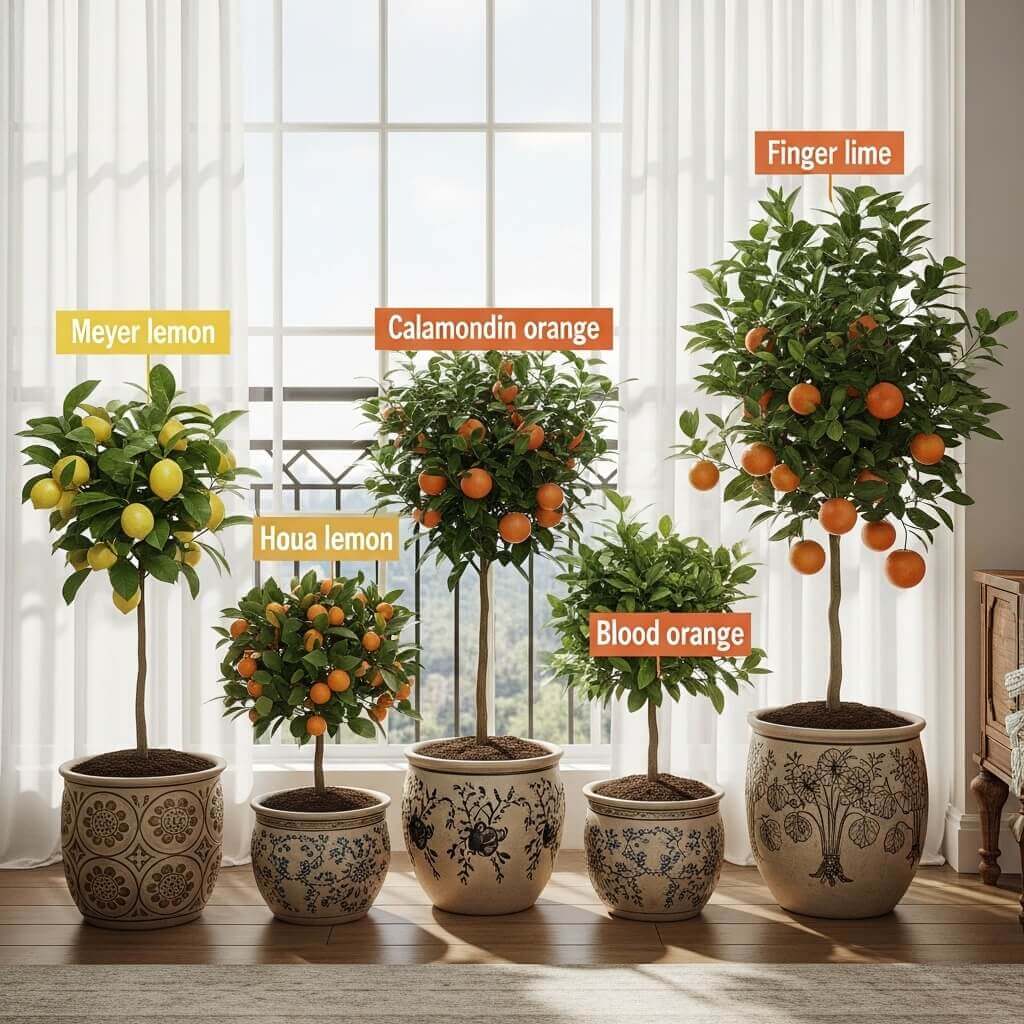
Tip: Go for grafted dwarf trees. They fruit sooner and stay compact.
You can find these varieties on Amazon.
Set the Stage: Sunlight, Containers, and Soil
If citrus trees were people, they’d be sunbathers. Sunlight for citrus trees is non-negotiable.
Light Requirements
- At least 8-12 hours of direct sunlight daily
- South or west-facing windows are ideal
- Use grow lights if natural light is limited (check Amazon grow lights)
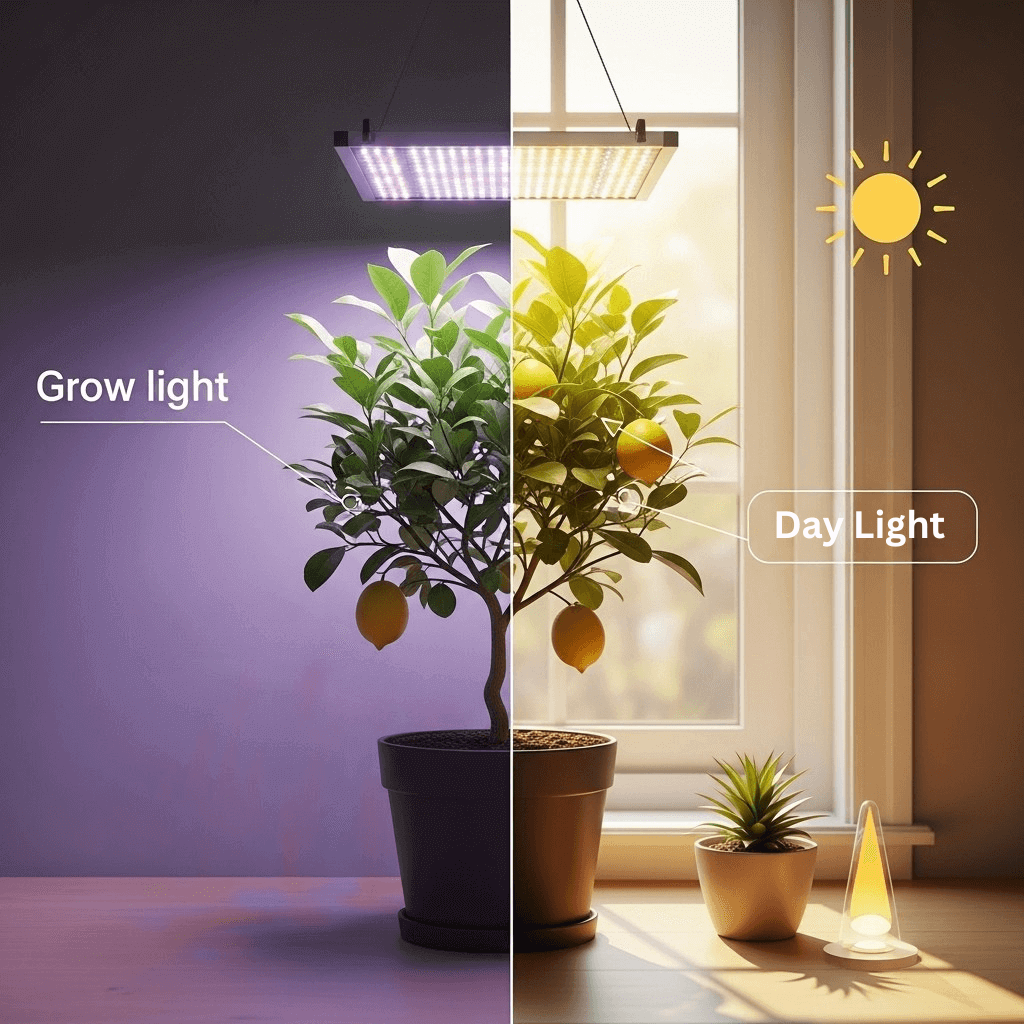
Best Containers for Citrus Trees
- Containers with good drainage holes
- Material: Terracotta or plastic
- Size: Start with 10-12 inches wide; repot as tree matures
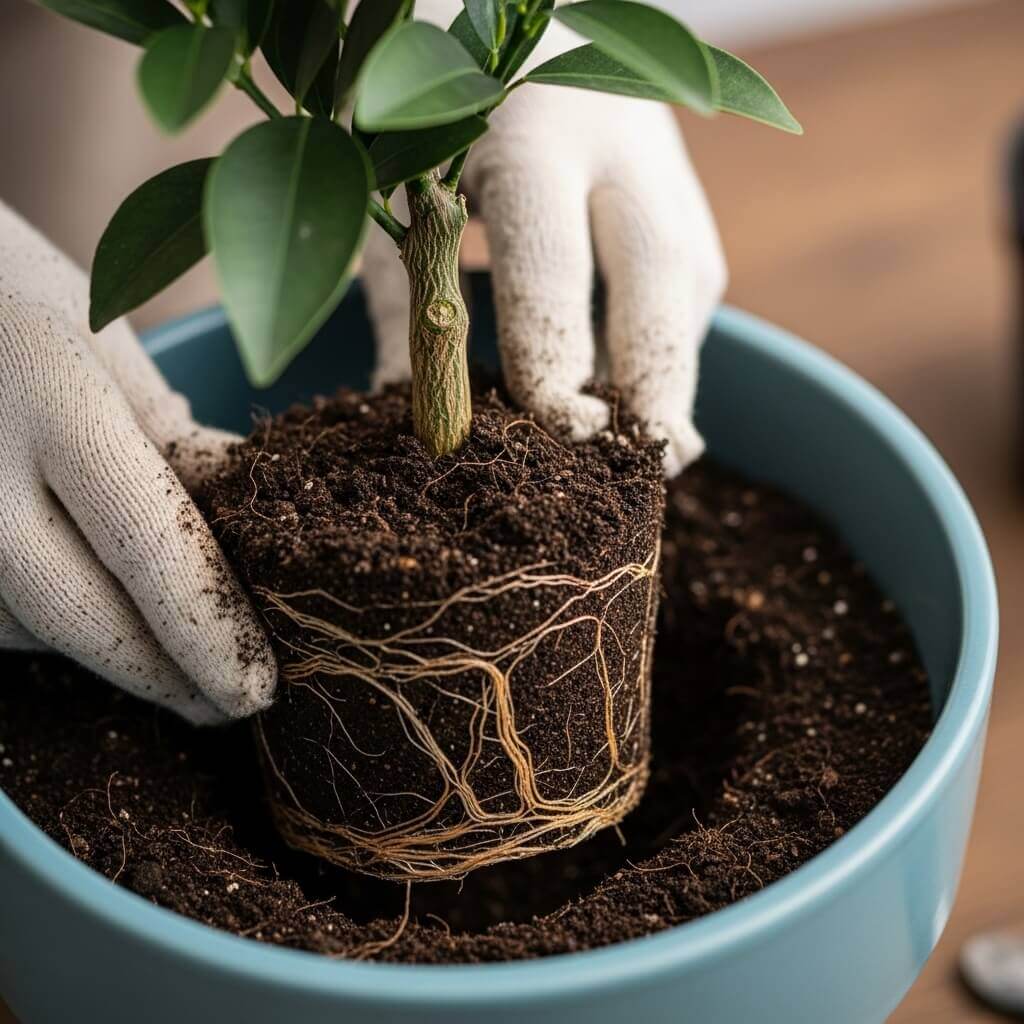
Soil Mix
- Use a well-draining citrus-specific potting mix
- Avoid regular garden soil; it holds too much moisture
Watering & Humidity: Finding the Sweet Spot
Indoor citrus care hinges on striking the right balance. These trees hate wet feet but dislike dryness, too.
Watering Tips:
- Water when top inch of soil is dry
- Water deeply, allow excess to drain
- Use a saucer, but don’t let the pot sit in water
Humidity for Citrus Plants:
- Keep room humidity around 50-60%
- Mist leaves occasionally
- Use a humidity tray or humidifier in winter months
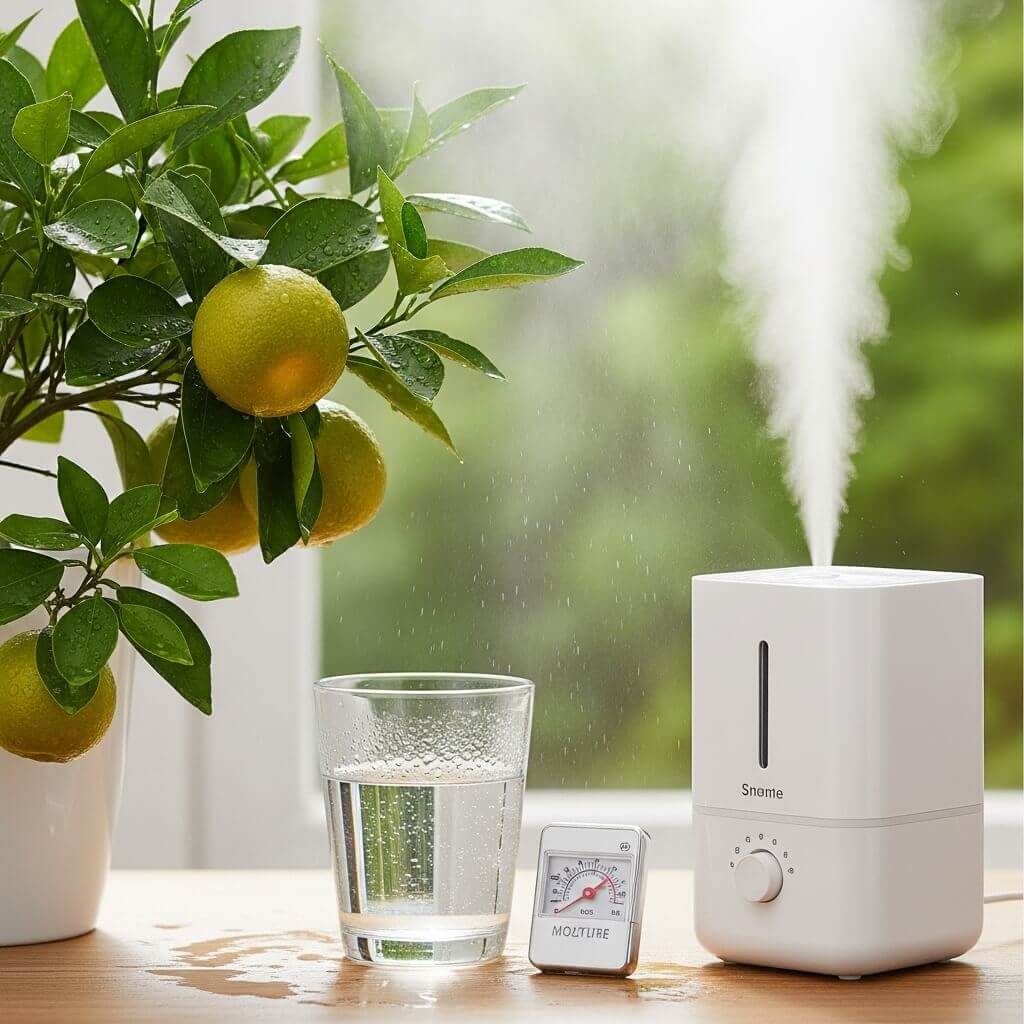
Think of your citrus tree as a tropical vacationer — it loves moisture, but not a monsoon!
Fertilizing and Feeding Your Indoor Citrus
Citrus trees are hungry little growers. To keep them productive, you’ll need a regular feeding schedule.
Best Fertilizers:
- Use a citrus-specific fertilizer with nitrogen and micronutrients
- Fertilize monthly from spring through fall
- Reduce feeding in winter
Pro tip: Leaf drop often means a feeding or watering issue, not a tantrum. Don’t panic.
Pollination: Yes, Even Indoor Trees Need Bees (or You!)
Here’s the twist—citrus tree pollination is vital even indoors. But don’t worry, you can be the bee!
How to Pollinate Indoor Citrus Trees:
- Use a soft paintbrush or cotton swab
- Gently transfer pollen from flower to flower
- Do this during blooming season (usually spring)

It’s like citrus matchmaking—minus the dating drama.
Pruning, Repotting & Troubleshooting Common Problems
Pruning Tips:
- Remove dead or crowded branches
- Pinch off suckers (fast-growing stems below graft)
- Maintain shape and airflow
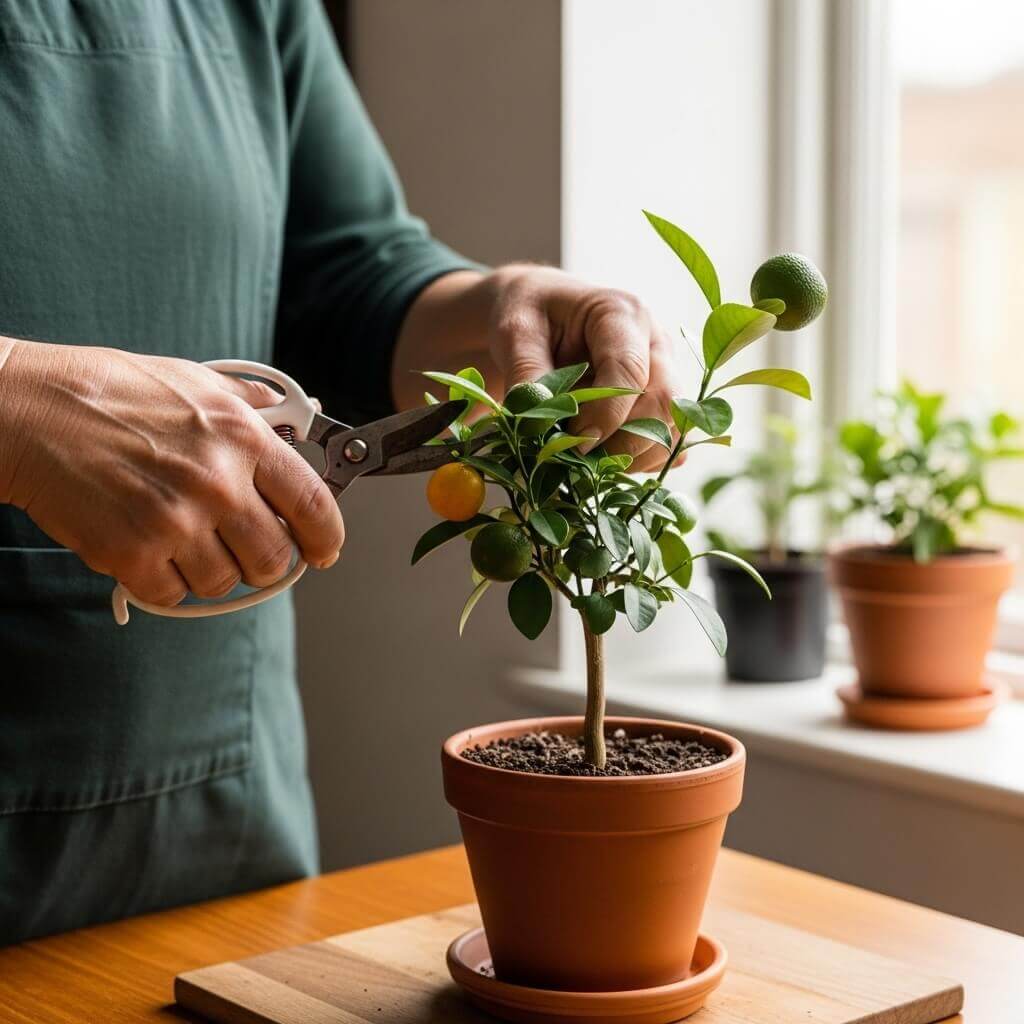
Repotting:
- Repot every 2-3 years into a slightly larger pot
- Best done in spring before active growth
Common Issues:
- Leaf yellowing: Often overwatering or nutrient deficiency
- No fruiting: May need more light or better pollination
- Pests: Watch for spider mites, aphids, and scale insects
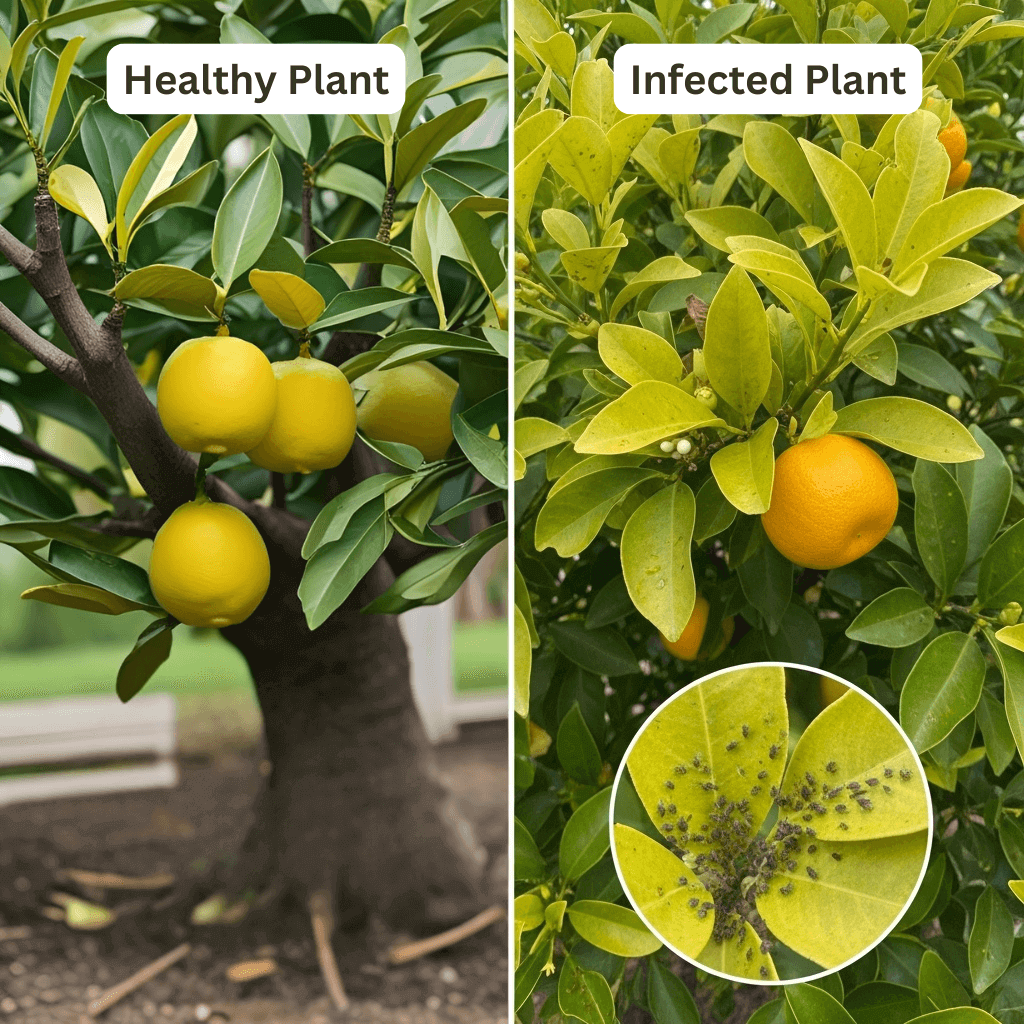
Want more tips on plant pests? Check our A-Z Gardening Glossary!
Decorating with Indoor Citrus: A Feast for the Eyes and Senses
Not only are indoor citrus trees functional, but they’re also fabulous decor.
- Place them near a sunny kitchen nook
- Add herbs like rosemary or basil at the base for a mini-edible garden
- Try pairing with edible flowers from this guide
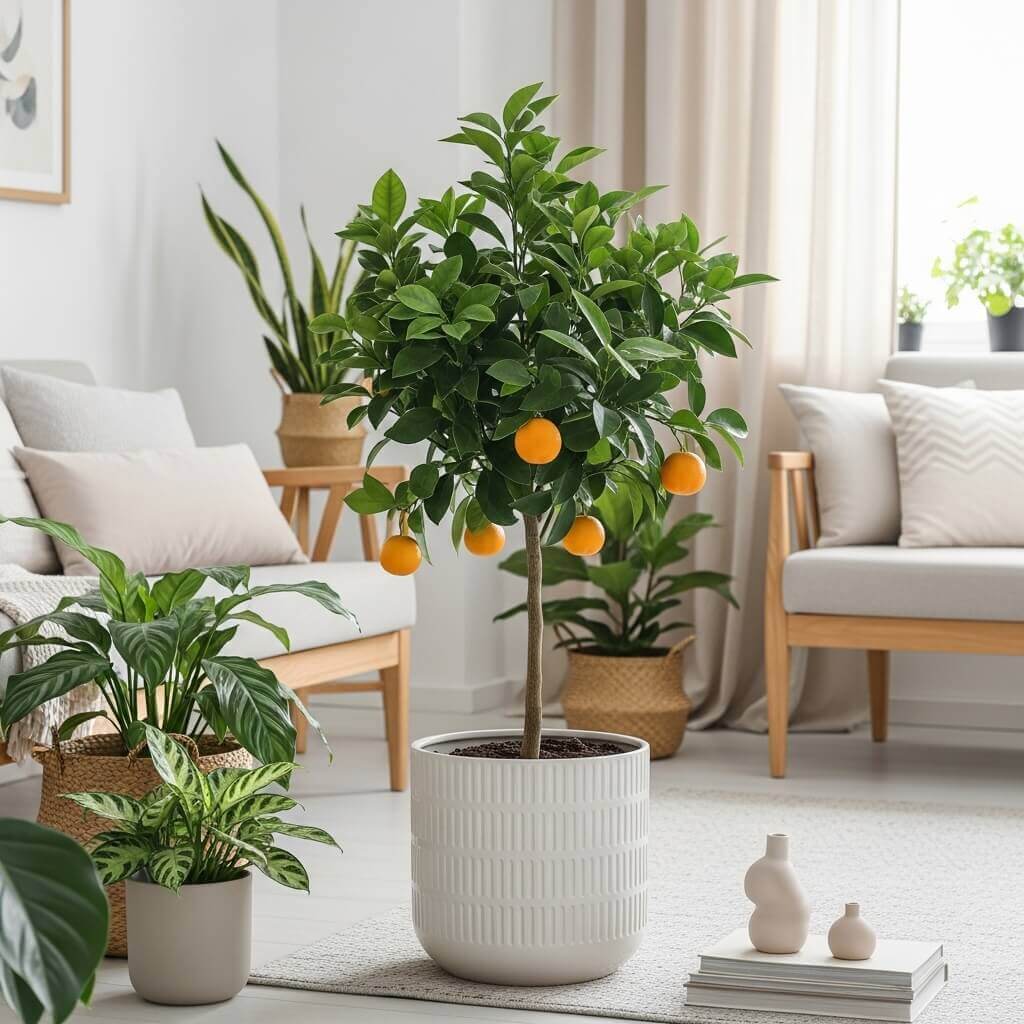
Bonus Tips: Keeping Citrus Trees Happy All Year Round
- Rotate pots weekly for even sun exposure
- Wipe leaves occasionally to remove dust
- Play classical music near your citrus for those “fruitful vibes”
Okay, that last one might be optional—but hey, it can’t hurt!
Final Thoughts: Your Indoor Orchard Awaits
So, there you have it. Growing citrus trees indoors is totally doable, deeply rewarding, and a little bit magical. From that first fragrant bloom to harvesting your own Meyer lemon, it’s a journey worth every drop of water and beam of sunlight.
Why not start with just one tree and see where it goes? You might just fall in love with indoor citrus gardening. Before you know it, your friends will call your kitchen “The Lemon Lounge.”
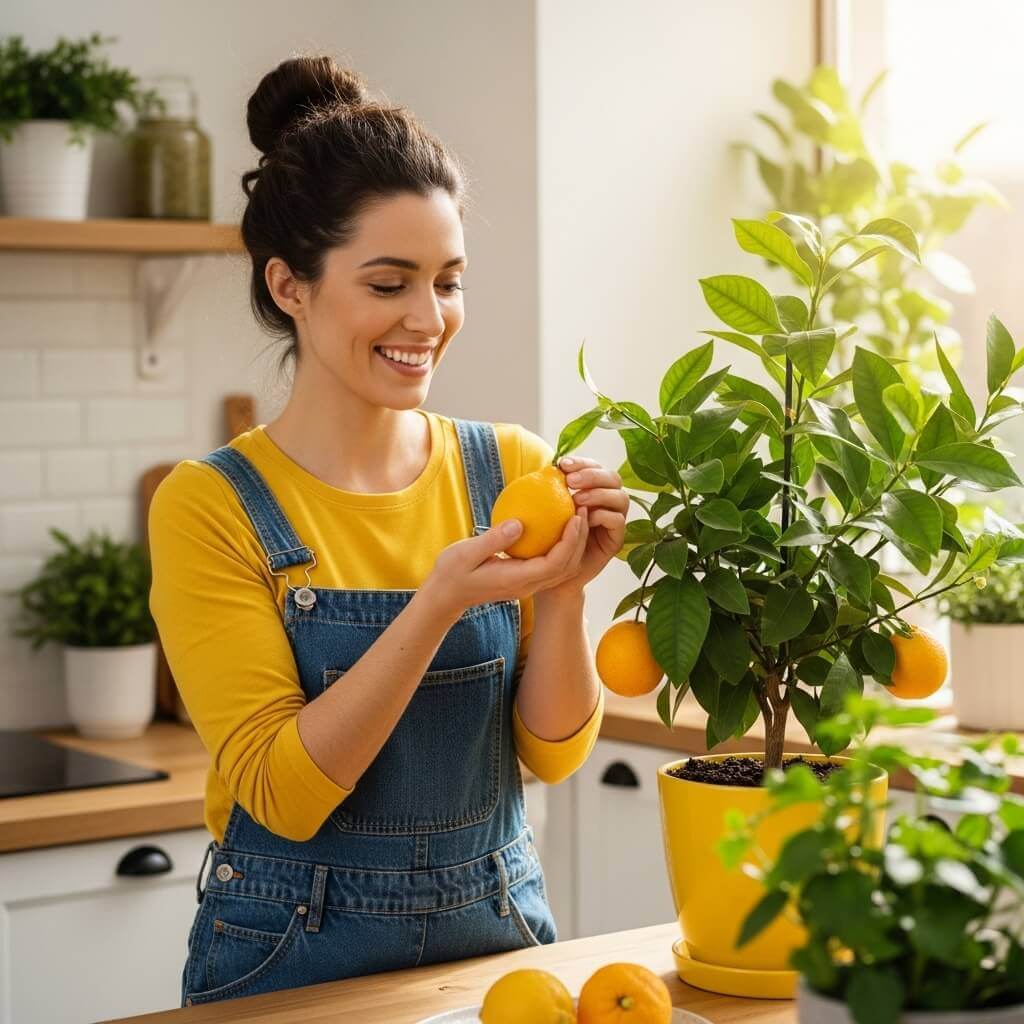
And if you’re looking to expand, check out our guides on balcony vegetable gardening or how to attract pollinators to your garden. Who says you need a backyard to grow something amazing?
Happy growing, citrus lover!
